Actions for Environmental Vision:
Epson manufacturing supported by 100% renewable electricity
Epson aims to become carbon negative by 20501. To reach this goal, reducing greenhouse gas (GHG) emissions in the product manufacturing process is essential. Epson has achieved a 100% renewable electricity supply at all sites worldwide2 and delivers products from factories powered by renewable electricity. From now, in addition to working on this issue ourselves, we want to work with our partners to reduce our environmental impact.
"We want to provide our customers with products and services that also have the value of low environmental impact-a value that meets the needs of society." - That is Epson's commitment.
Taking on the Challenge of Transitioning to Renewable Electricity

In fiscal 2017, 77% of Epson's GHG emissions3 from its own manufacturing (entire group) came from electricity use. Approximately 60% of that electricity was consumed in Japan. Therefore, sourcing domestically consumed electricity from renewable sources was considered first. However, at that time, the supply of renewable electricity in Japan was even more limited than it is now, making it extremely difficult for manufacturing companies that needed large amounts of electricity for their factories to switch significant amounts of their power to renewable energy.
It was in this context that an idea emerged to utilize the natural environment of Nagano Prefecture, Japan, where Epson was founded. "If we used hydroelectric power generation using the abundant water resources of Nagano Prefecture with its many rivers, we might be able to power our sites in Nagano." To realize this idea, efforts towards renewable energy were launched at a time when electric power companies did not yet have an electricity menu to sell as renewable energy (a system for extracting the energy attribute -the environmental value associated with renewable electricity)
Negotiations with power companies first began in the Nagano and Tohoku areas, where many production sites are located. To support the power companies in building the necessary infrastructure, Epson demonstrated its intention to purchase a substantial amount of renewable electricity continuously, and after years of discussions, a mechanism to purchase electricity derived from renewable energy was finally created. In November 2021, the company completed a full switch to renewable electricity at all domestic sites2.
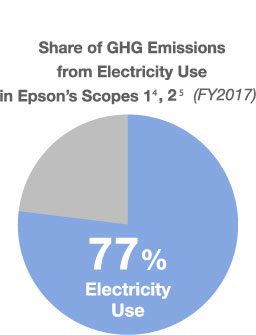
Tailoring Renewable Solutions to Local Needs
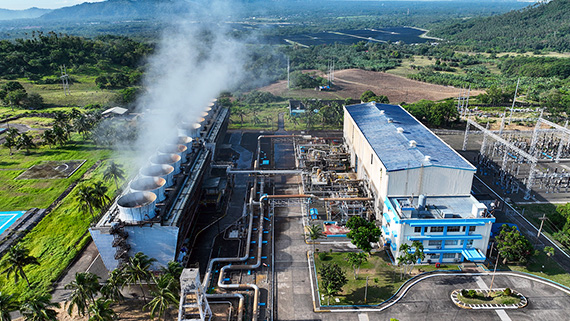
Location: MakBan power plant operated by AboitizPower
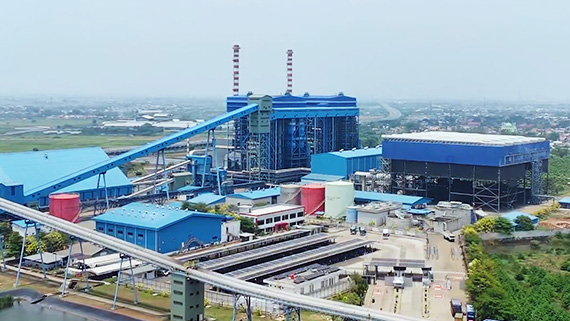
Location: Babelan power plant operated by Cikarang Listrindo
In parallel with domestic renewable electricity transition, Epson also promoted the transition to renewable electricity at sites outside Japan. In some regions, renewable electricity was very limited and expensive, or locally produced renewable electricity was difficult to obtain. When promoting renewable electricity, however, Epson made a conscious effort to use locally generated electricity whenever possible. Because local production and consumption of energy is a crucial strategy for decarbonization and regional economic growth, offering various benefits including reduced transportation costs, job creation, and raised awareness of environmental issues.
At Epson, because geographic conditions differ by site location, we aimed for a renewable electricity transition using methods suited to each region's characteristics, geothermal and hydroelectric power in the Philippines and biomass power generation in Indonesia.
Achieving 100% Renewable Electricity at All Sites
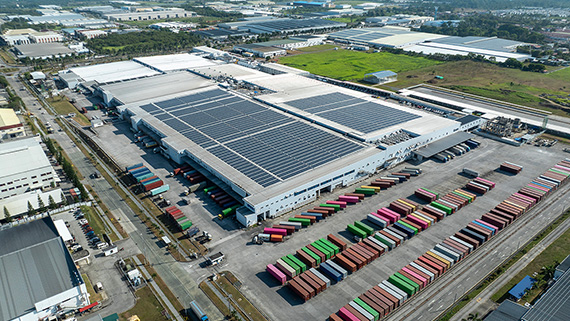
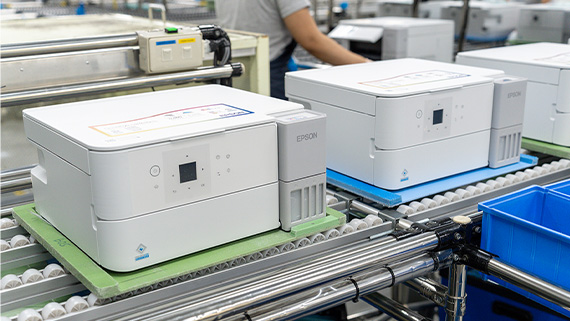
In March 2021, Epson announced its determination to become carbon negative by 2050 and simultaneously declared its commitment to " transition to 100% renewable electricity at all group sites worldwide." Just 2 years and 10 months after that declaration, in December 2023, Epson Group achieved the transition to renewable energy for electricity used at all sites2 as a result of gradual implementation. With a total annual electricity consumption of approximately 876GWh6, this has resulted in a reduction in GHG emissions of approximately 400,000 tons. This has enabled Epson to deliver products from factories that are powered entirely by renewable electricity.
Building a Sustainable Society Together with Partners
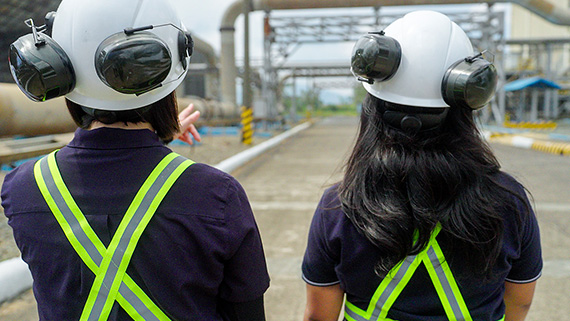
Epson achieved 100% renewable electricity transition at all group sites worldwide. Now, having taken this step, we have begun working to find "partners" who share our commitment to realizing a sustainable society. This is because reducing GHG emissions is an issue that must be addressed across the entire value chain. Because GHG emissions that occur elsewhere in the value chain but for which the company bears indirect responsibility (Scope 37) are far greater than the GHG emissions for which the company is directly responsible (Scope 14) or those associated with our electricity consumption (Scope 25), and achieving carbon negativity by our own efforts is not enough, so the cooperation of our suppliers is necessary. At Epson, we want to use our own experience to support the decarbonization efforts of our suppliers. By increasing the number of partners who share our vision and working together with them, we believe we can open up possibilities for "realizing a sustainable society," and we will continue to move forward on this path.
1 Reference link: Vision | Sustainability | Epson
2 Excludes some sales sites and leased properties where the amount of electricity consumed cannot be determined.
3 Scope14 and Scope25
4 Direct emissions resulting from fuel use by business operators
5 Indirect emissions originating from energy sources such as electricity
6 Fiscal 2022 results, including electricity generated by the CGS (cogeneration system) and on-site power generation
7 Indirect emissions from the company's entire value chain
Recommend
Explore Other Activities

Environment
We are decarbonizing, closing resource loops, and developping environmental technologies that reduce environmental impacts.




